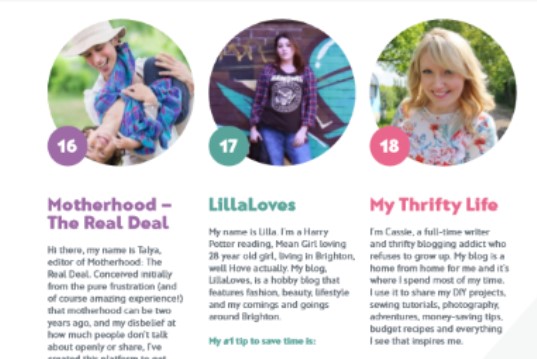
How many emails have you received this week from businesses promoting their product? I even get junk text messages on my phone. It appears that the brands who have been so careful not to become part of the ‘wallpaper’ of excessive advertising have now become e-spammers and are just as undesirable for customers to engage with.
Pricewaterhousecoopers confirms that traditional TV advertising is now a follow-on strategy for retailers, behind the Internet, mobile telephone SMS campaigns and promotional events. So even small businesses can now be using the same techniques to promote their products as the big brands. Viral marketing and word-of-mouth campaigns are much more attractive for both promoters and customers alike, as the cost of marketing in this way can cost considerably less than TV & glossy magazine advertising, and customers are much more receptive to friendlier communication techniques; blogs, Twitter, Facebook pages, Youtube videos, podcasts, product placement and review sites.
In 2008 Reuters reported that social media overtook porn as the number one online activity and the Interactive Advertising Bureau agrees; “if you’re not on a social networking site, you’re not on the Internet” which is equally true for companies. According to Mike Murphy, Vice President of Global Sales at Facebook, 83 of the top 100 ad spenders in the US have a Facebook strategy, with the aim of developing friendly relationships with customers to ensure that when the time comes to make a purchase they will turn to their brand first.

Social media gives the customer the information that they want in a familiar format and they are more likely to trust the opinion of a Facebook or Twitter friend than an advert created by the brand. Using social networking and blogs is empowering shoppers as they can comment on products and services and transmit their opinions to a worldwide audience. Plus, recommendations of brands or products from friends and family remain a key motivator for making a purchase. This is why it is important for businesses to be present on websites where this conversation is occurring, to encourage positive word-of-mouth.
Yet companies cannot focus solely on promoting their product through social networks as users are becoming savvy to corporate messages ‘hidden’ in Twitter posts and Facebook page updates and will resist, seeing it as an invasion into a space they use solely for personal interactions. Social networks should not be seen as a place for businesses to advertise their products for free – it should be a refuge from the barrage of advertising messages and simply be used as a communication tool.

Promotional marketing should focus on making the customer feel good, and in an era when recession hit this is an attractive offer for the consumer. Businesses that use social networking can provide an almost personalised service to the customer – giving information directly to the customer as soon as they want it. And on the other hand, customers sharing their shopping experiences on social media can also give businesses an insight into what the customer wants and how to give it to them; resulting in a satisfied customer and a profitable company.
Here are my top 5 dos and don’ts for using social media to improve your business:
- Don’t directly Tweet your products: It’s boring seeing update after update of new products on the business’ website – at best followers will ignore your tweets or at worst will unfollow you = no more communication.
- Don’t send unsolicited messages: Customers will grow angry and emails will be deleted or marked as ‘junk. Only communicate with customers who have requested to receive your newsletter – you can add a newsletter sign-up button to your website/shop/blog. Use a mailing programme online such as Mailchimp, which will keep track of customers signing up & unsubscribing for you.
- Don’t be offensive: Even though social media is informal, always remember you are using it to show off your business in a positive light. Your customers certainly don’t want to see swearing, rude-tube videos or slagging off the competition.
- Don’t ignore your customers: Check your Twitter, Facebook or email messages daily to ensure timely replies to questions & comments, giving your customers a friendly personalised service.
- Don’t forget to tell customers what you do: Make sure that your followers can easily see what you do, your website address and how to get in touch with you. There’s no point in being friendly and entertaining if no one knows what you do or how to buy from you!
- Do ‘Like’ and ‘Follow’ others: Especially similar users to your business, and try to get them to follow you back – eg. If I was promoting a range for children, I would follow parenting magazines, kids events and other child-related brands. Other social media users often look at who their favourite Tweeters follow to find like-minded Tweeps and your follower list will grow.
- Do share interesting content: News, photos, stories and videos will keep your customers entertained through Twitter, Facebook or even a blog.
- Do create professional-looking newsletters: Include your interesting content alongside your products or special offers – Mailchimp provides newsletter design options to send to your subscribers.
- Do make professional contacts: Use the informal nature of social media to start up working relationships with similar organisations as you never know when you’ll need a helping hand, plus you can get in touch with relevant bloggers and journalists to share interesting information about your business which might end up becoming an article, blogpost or Retweet.
- Do sign up for industry networks: You’re not limited to the most popular social media sites – there are hundreds of networks out there for different professions and interests, such as Creative Connections for crafters. You can get both support & friendship from like-minded people and an additional promotional space for your business.

By Cassie Greenacre of Cassiefairy.co.uk, published in Creative Crafting Magazine, October 2011 issue- get in touch www.cassiefairy.co.uk or email cassie@cassiefairy.co.uk
This article is a sponsored collaboration. The pink links in the content indicate a sponsored link or information source. The blog post reflects my own experience and the sponsor hasn’t had any control over my content 🙂






















